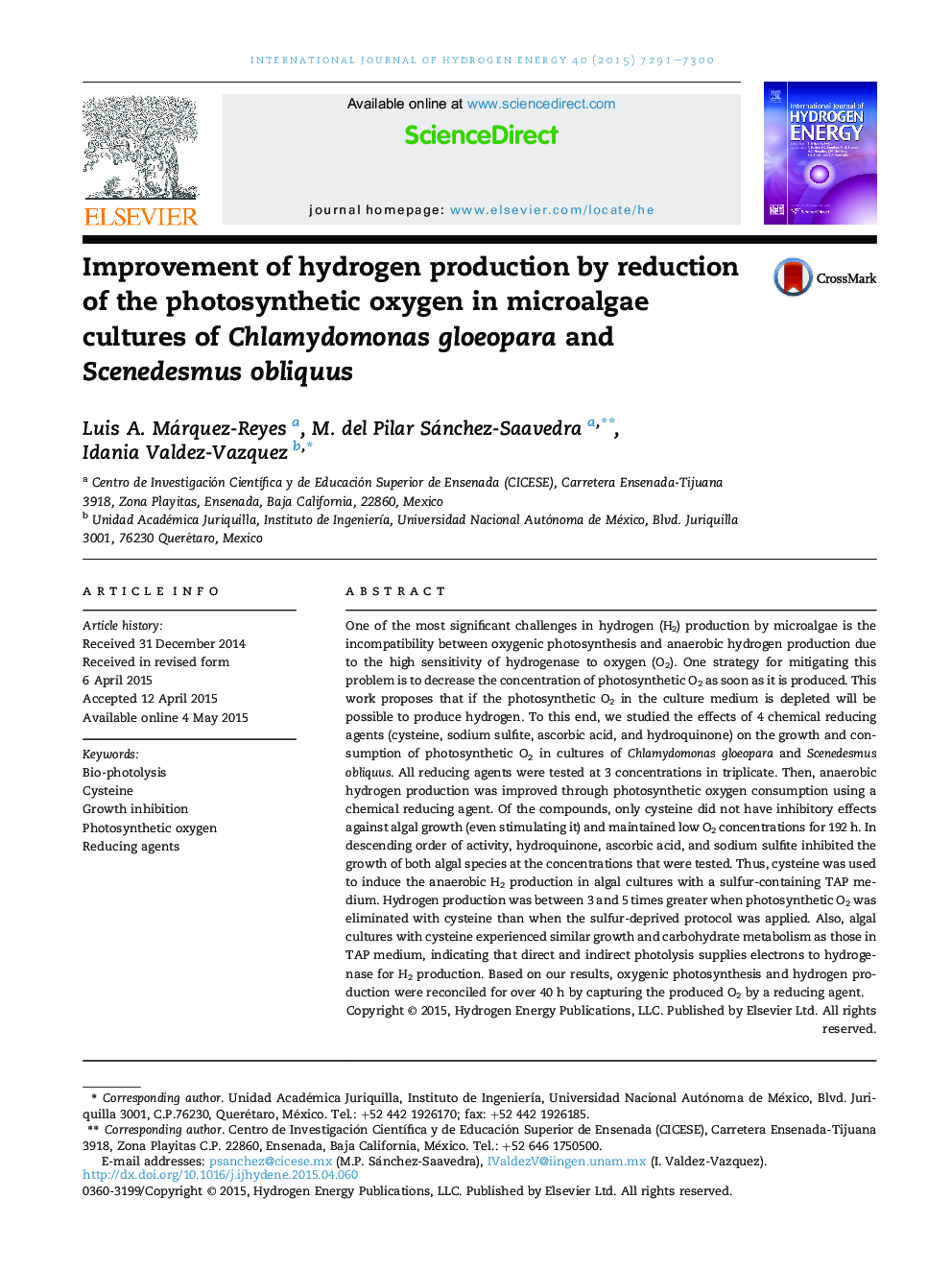| کد مقاله | کد نشریه | سال انتشار | مقاله انگلیسی | نسخه تمام متن |
|---|---|---|---|---|
| 1270980 | 1497450 | 2015 | 10 صفحه PDF | دانلود رایگان |

• Reducing agents were used to remove photosynthetic O2 in cultures of green algae.
• H2 production and photosynthesis were maintained simultaneously for over 40 h.
• H2 production was greater with a reducing agent than under sulfur deprivation.
• Algal growth and carbohydrate consumption were very active throughout the test.
One of the most significant challenges in hydrogen (H2) production by microalgae is the incompatibility between oxygenic photosynthesis and anaerobic hydrogen production due to the high sensitivity of hydrogenase to oxygen (O2). One strategy for mitigating this problem is to decrease the concentration of photosynthetic O2 as soon as it is produced. This work proposes that if the photosynthetic O2 in the culture medium is depleted will be possible to produce hydrogen. To this end, we studied the effects of 4 chemical reducing agents (cysteine, sodium sulfite, ascorbic acid, and hydroquinone) on the growth and consumption of photosynthetic O2 in cultures of Chlamydomonas gloeopara and Scenedesmus obliquus. All reducing agents were tested at 3 concentrations in triplicate. Then, anaerobic hydrogen production was improved through photosynthetic oxygen consumption using a chemical reducing agent. Of the compounds, only cysteine did not have inhibitory effects against algal growth (even stimulating it) and maintained low O2 concentrations for 192 h. In descending order of activity, hydroquinone, ascorbic acid, and sodium sulfite inhibited the growth of both algal species at the concentrations that were tested. Thus, cysteine was used to induce the anaerobic H2 production in algal cultures with a sulfur-containing TAP medium. Hydrogen production was between 3 and 5 times greater when photosynthetic O2 was eliminated with cysteine than when the sulfur-deprived protocol was applied. Also, algal cultures with cysteine experienced similar growth and carbohydrate metabolism as those in TAP medium, indicating that direct and indirect photolysis supplies electrons to hydrogenase for H2 production. Based on our results, oxygenic photosynthesis and hydrogen production were reconciled for over 40 h by capturing the produced O2 by a reducing agent.
Journal: International Journal of Hydrogen Energy - Volume 40, Issue 23, 22 June 2015, Pages 7291–7300